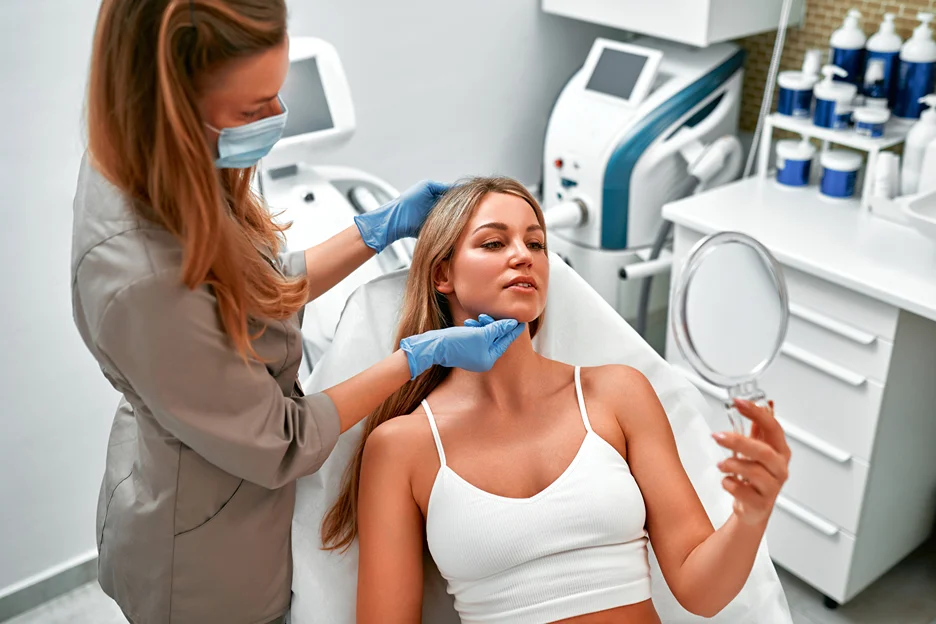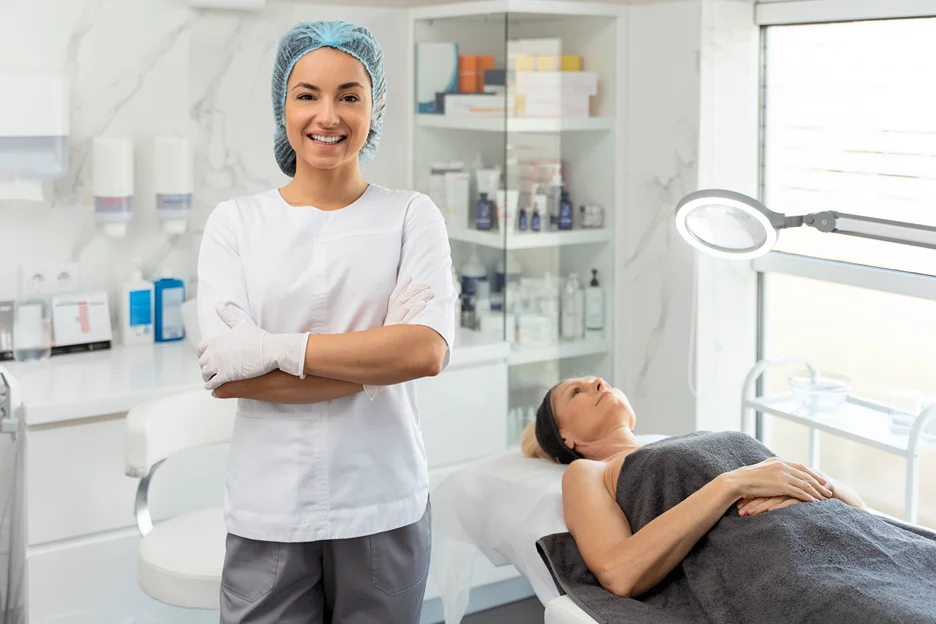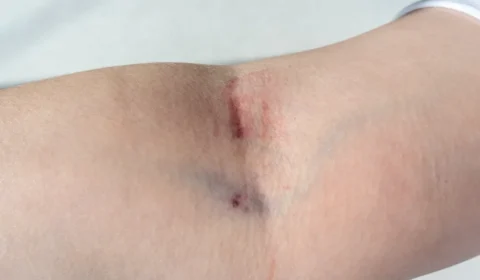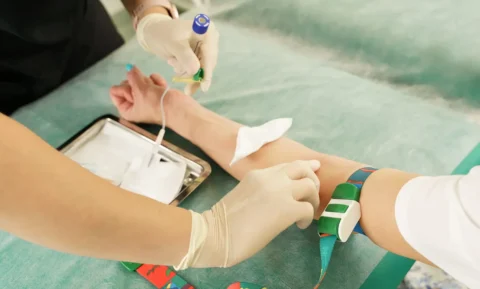Extractions are a core part of many esthetician facial treatments. Clients rely on skin care professionals like you to safely clear clogged pores and impactions in ways they cannot properly do at home.
At FaceMed Store, our team of estheticians understands how vital extractions are for maintaining skin health. This comprehensive guide will walk you through best practices for performing extractions as an essential esthetician skill.
A Primer on Esthetician Extractions
So what exactly are extractions and why are they an important part of your skincare toolbox as an esthetician? Here’s a quick overview:
What Are Extractions?
Extractions involve professionally clearing blocked pores, blackheads, whiteheads, and other skin impurities. This removes hardened sebum, dead skin cells, and debris that can clog pores and lead to breakouts. Gently opening clogged follicles restores smooth skin.
Different Types of Extractions
Blackhead extractions target open comedones with darkened sebum plugs. Milia extractions remove trapped keratin under the skin. Whiteheads involve closed comedones and deep impactions. Pustules contain trapped infection. Each has unique removal methods.
Are Extractions Safe For All Skin?
Gentle extractions are generally safe, but caution should be taken on sensitive or thin skin. Certain medications or conditions may be contraindications. Always consult with a client first to assess their needs and determine if extractions are advisable.
Why Do Clients Want Extractions?
Clients seek extractions to address clogged pores, acne, congestion, and roughness caused by trapped debris. Deep extractions by a professional can clear problem areas clients cannot properly treat themselves. This restores radiance and smoothness.
The Benefits of Professional Extractions
Performing careful extractions offers several benefits that improve skin’s overall health and appearance:
Extractions physically remove hardened sebum, dead skin cells, makeup debris, and other impurities that have become trapped within pores. This directly eliminates blemish-causing buildup and congestion on the surface level.
By clearing out clogged follicles, extractions allow other nourishing skincare products like serums, creams, and masks to better absorb into the deeper layers of skin. Without blocked pores, active ingredients can more effectively penetrate.
Skillfully extracting blackheads, whiteheads and other impactions helps prevent the continued expansion of these blemishes. Left untreated, they are likely to enlarge and potentially spread infection deeper into the pore over time. Extractions stop this process.
While not a standalone acne treatment, incorporating extractions into acne facials helps complement other smoothing and anti-bacterial procedures. Extractions remove excess sebum production that contributes to acne.
For clients with congested, clogged skin, regular extractions lead to visible improvements in texture, tone, and overall appearance over a series of treatments. Skin looks and feels smoother, fresher, and clearer.
Some clients report a refinement in the appearance of their pores after undergoing deep extractions. Removal of hardened sebum plugs allows pores to tighten slightly and appear less stretched out.
Overall radiance and glow is enhanced when dead skin buildup and oils are removed through thorough extractions down to the deepest levels of pores. Skin reflects light better.
Skin is better able to carry out its normal regeneration processes after being unburdened from trapped debris through professional extractions. Cell turnover and function improves.
Prepping Skin for Safe, Effective Extractions
Performing extractions properly begins before any tools touch the skin. Follow these pre-extraction steps:
Cleansing and Exfoliating Skin
Gently cleanse and exfoliate to remove surface oils and debris so pores are more accessible. Steam also helps open and soften pores. Avoid harsh scrubs before extractions.
Analyzing Skin and Identifying Areas of Concern
Visually inspect all areas of the client’s skin under bright light and magnification. Look for any contraindications. Note all areas with congestion and impactions needing extractions.
Applying Hot Towels
Apply a hot towel to the client’s face to further open pores and soften any impactions prior to extractions. Re-apply towels as needed throughout the process.
Soothing and Numbing
Consider applying a mild numbing cream, especially if the client is extraction-shy. This reduces discomfort. Always communicate to avoid surprises.
Sanitizing Hands and Tools
Diligently sanitize your hands, reusable tools, and work area. Alcohol and UV wands prevent cross-contamination. Replace disposable tools after each use.
Client Communication Tips for Extractions
Clear communication with clients before and after extractions eases potential anxiety and sets appropriate expectations. Here are some best practices:
During consultations, explain the process and benefits of extractions for managing acne and clogged pores. This demystifies the treatment.
Give clients a choice and obtain explicit consent prior to extractions instead of assuming. This avoids surprises down the line.
For extraction shy clients, offer topical anesthetics to reduce discomfort. Make them feel cared for.
Talk clients through the process step-by-step to avoid startling them. Always give a warning before lancing whiteheads.
After extractions, provide clear written and verbal aftercare instructions. Emphasize avoiding sun, picking, scrubbing, etc. during healing.
At the end of the facial, show clients a mirror and point out areas of improvement. This reinforces the benefits.
Follow up after a day or two by phone or email to check on healing and product tolerance. Adjust recommendations as needed.
Thorough communication, care and customization makes even the most extraction-averse clients comfortable. Take the time to consult and educate.
Mastering the Extraction Process
Now that skin is prepped, it’s time to delve into the extraction process. Follow these tips for professional results:
Select Appropriate Extraction Tools
Choose sterile lancets, extractors, or comedone tools based on the types of impactions. Quality stainless steel tools like those from FaceMed Store maximize results.
Apply Steady Pressure for Safe Extraction
Use magnification to precisely locate impactions. Carefully apply steady outward pressure with the extractor to open pores and clear congestion. Avoid damage by not over-twisting.
Identify and Avoid Sensitive Areas
Areas like the nose and chin tend to have more oil glands. Take care on sensitive or thin skin prone to bruising and tearing.
Fully Clear Impactions and Debris
Ensure each extraction fully clears hardened sebum, keratin plugs, dead skin, and other debris trapped in the pore. Leaving any remnants leads to rapid re-clogging.
Swab Away Expressed Material
Keep the extraction area clear by using sterile cotton swabs to absorb and gently dab away any expressed sebum, pus, or blood. Keep swabbing until the pore is empty.
Apply Antiseptic and Soothing Products
After fully extracting, apply antiseptic toner then soothing products containing ingredients like aloe or azulene to calm irritation and redness. This speeds healing.
Properly Sterilizing Extraction Tools Between Clients
Proper sterilization of extraction tools between clients is critical. Here are key recommendations:
| Method | Description |
| Autoclaving | Heat sterilization for metal tools after each use. Kills all microorganisms. |
| Disinfectant Immersion | Fully immerse tools in EPA-registered disinfectant for recommended contact time. Change fluid daily. |
| Alcohol Swabbing | Swab with 70% isopropyl alcohol between extractions. Prevents cross-contamination. |
| Proper Storage | Keep tools in an airtight sterile case until next use. Don’t leave out. |
| UV Sterilization | UV light tools provide portable sterilization for metal extractors and lancets. |
| Discard Disposables | Dispose of disposable tools after one use. Never attempt to reuse. |
| Hand Washing & Gloves | Wash hands diligently and wear disposable gloves during extractions. |
Completing the Service

Extractions are not the final step in an esthetician facial treatment. Be sure to properly complete the service:
Thoroughly Sanitize Treatment Area
Carefully sanitize any re-usable tools and thoroughly wipe down your work station. Proper disinfection between clients prevents spread of bacteria.
Reduce Inflammation and Redness
Continue applying soothing and cooling products to help the skin recover after extractions. This reduces residual redness and inflammation. Recommend gentle home care.
Review Post-Treatment Guidelines
Provide clear aftercare instructions. Advise clients to avoid sun exposure, use gentle products, and resist picking at skin as it continues healing over the next 48 hours.
Offer Complimentary Extractions
Reward regular clients by occasionally including extractions for free as a bonus add-on service. This shows appreciation for their loyalty.
Analyze Your Approach
Assess your technique after the appointment. Make notes on any improvements you can implement to enhance client comfort and the quality of future extractions.
Effective Extraction Aftercare for Optimal Healing
Proper aftercare following extractions is crucial for soothing inflamed skin and promoting fast, optimal healing. Here are some top recommendations:
Apply aloe vera gel to reduce redness and inflammation. The cooling properties are ideal for irritated post-extraction skin.
Look for serums containing soothing ingredients like calendula, chamomile extract, oat extract, green tea, hyaluronic acid, and niacinamide. These nourish skin and speed healing.
Incorporate products with vitamin C and vitamin E post-extraction, as their antioxidant properties help heal damage and fading any lingering red marks.
Avoid potentially irritating ingredients like retinol, benzoyl peroxide, glycolic acid, and essential oils while skin is healing. Focus only on gentle, soothing formulas.
Tea tree oil’s antimicrobial properties make it ideal for preventing infection in opened pores post-extraction. Apply diluted or in cleansers.
Minimize sun exposure which can darken post-extraction redness. Opt for mineral sunscreens formulated for sensitive skin while healing.
Resist picking at skin as it continues healing. This avoids scarring and further irritation. Keep hands away from the face.
Stick to a gentle cleanser only. Avoid scrubs, buff puffs, or brushing for 72 hours post-extraction while skin recovers.
Following this aftercare diligently reduces the potential for inflammation, scarring, hyperpigmentation and other post-extraction issues. Be vigilant and keep skin calm.
Elevating Your Extraction Expertise Over Time
Master estheticians view extractions as both a science and an art that continuously evolves. Here are some ways to keep refining your extraction skills:
Pursue Advanced Training
Take advanced classes on clinical extractions for different skin types and conditions. Attend seminars from esthetics industry experts to learn new techniques using cutting-edge tools.
Customize for Each Client’s Skin
Tailor your approach based on the unique needs of each client’s skin. Adjust pressure, tools, and soothing steps accordingly. What works for one may be ineffective for others.
Stay Updated on the Latest Products
Regularly browse extraction tools and supplies from trusted brands like FaceMed Store. Be among the first estheticians to offer new innovations to clients wanting results.
Consider Clinical Esthetics Specialization
For the most recalcitrant extraction cases, consider pursuing specialized training in clinical/medical esthetic procedures. This opens new client opportunities.
The more you elevate your knowledge, the better extraction results you can provide clients. Continuously improving techniques is key for esthetician success.
Conclusion

Extractions are a key component of the skincare facials and treatments estheticians provide. When performed properly using sanitary practices, effective techniques, and quality tools, extractions can safely reveal clear, smooth, acne-free skin. Avoid potential hazards by heeding best practices for pre-extraction analysis, pain management, tool usage, and aftercare.
Here at FaceMed Store, we offer estheticians an extensive catalog of extraction tools and supplies. Our offerings help support flawless extractions while keeping your costs low. Contact us today to explore our extraction essentials and elevate your next client treatment.






